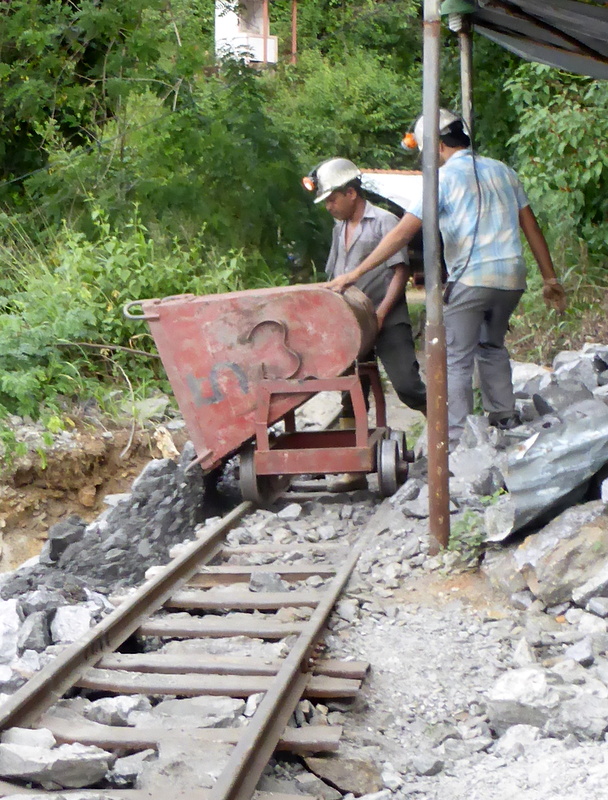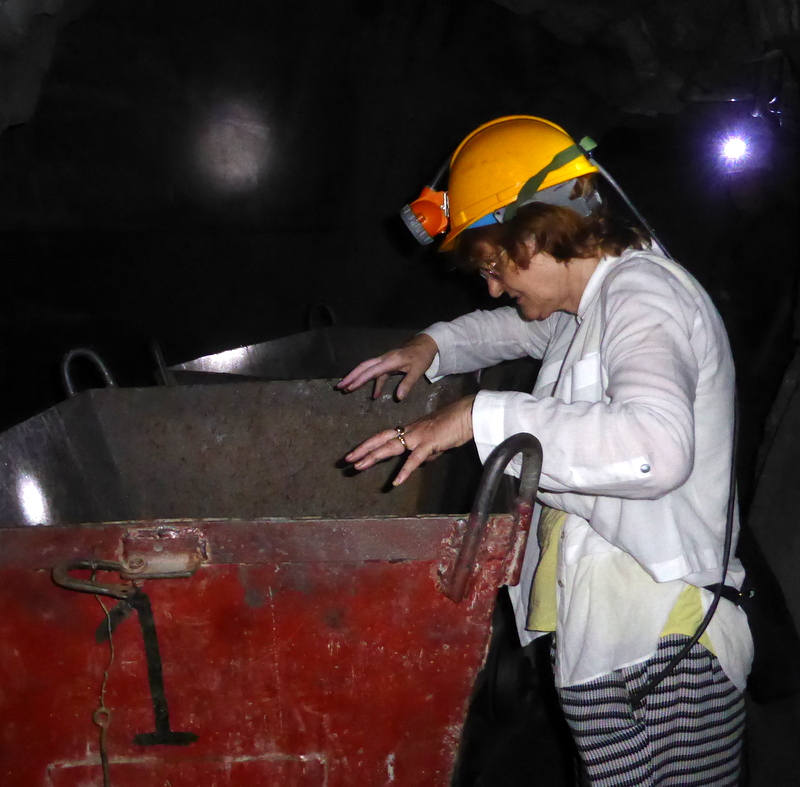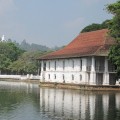For a pre-Christmas treat I took my wife on a special trip. She dressed beautifully in mainly white with her large sunhat and a pair of gold lame shoes. I like to give a girl a good time and I had heard of this place up in the hills near Kurunegalla in the centre of Sri Lanka. Not many girls get a chance to visit there.
We drove up a narrow lane through an attractive area of jungle to a small settlement with a couple of bungalows and installations of mining equipment.
I held an ambition to visit this graphite mine for some time. A friend owns it and kindly arranged for us to go there.
Kitted out
We were both kitted out with large mining wellies, the gold shoes had to be left on a pile of rock. We had hard helmets with lights and batteries in our pockets. There were no overalls. We trudged up a mountain track, into a cleft in the rock which had a black tunnel opening at the end. In we went, lights on, heads bowed to avoid the roof.

The mining engineer, a large German, was a very knowledgeable guide. He had a wealth of interesting stories and I suspect another batch of stories he might tell when ladies were not present.
Graphite
Graphite, he explained, is pure carbon with a small percentage in the form of graphene. It forms in the fissures of ancient rocks, solidifying from liquid when the temperature drops below 3000oC. The seams are about 1M wide but each holds about 5000 tons of graphite.

Mining engineers search for the seams by drilling into the rock and examining the cores. They have a ‘rule of thumb’ method to estimate how much graphite may be there and whether it is economically worthwhile developing a particular seam.
We walked along the rail track leading into the tunnel. After a 100M there was a shaft leading straight down to a series of tunnels where seams were being worked.
Hammers and Blasting
The miners use jack-hammers powered by compressed air from the surface to free the graphite. Every so often the rock is drilled for explosive charges. There was a faint small of fireworks in the air from a blasting done earlier in the day.
Above the vertical shaft a hoist was arranged to bring up skips of graphite or waste rock. This was manhandled along the rails and the rubble tipped down the mountainside. The graphite was tipped down a shoot to the processing plant.

Purification
Buyers need the graphite to be pure. This particular mine produces the purest graphite available but further purification by a flotation process is applied to give a 99% purity. The contaminants are pieces of the surrounding rock, granite and some iron pyrites.
After drying, the graphite is pressed into 40 Kg cakes and shipped off to the word market. Current production is 50 tons per month but will shortly rise to 150.
The graphite seams are a shiny grey-black. We expected to get black with dust but there was very little. Our hands got dirty but graphite easily washes off. The ground was slippery, motorists will know that graphite is used as an aid to lubrication.
The world market for graphite is growing. Each electric car needs about 25 Kg for its batteries.

After the shift
Our visit was after the day shift was over. With the jack hammers working, the skips being moved and the purification plant operating it must be a noisy and busy place. It was peaceful when we were there. The engineers and miners were relaxing at a game of cricket in the mine yard.
Did Madame have a good time?
Did Madame enjoy it? We lost her, she had gone off with the van driver to discuss something other than mining and cricket. She obtained his family history and knew all about his children. If the mine had contained that other form of carbon, diamonds, she would have paid more attention.
The cup of tea and bananas in the manager’s bungalow afterwards was, however, deemed a success.
I think I had better get her an extra nice Christmas present.
Never miss out on another blog post. Subscribe here:






Leave a Reply